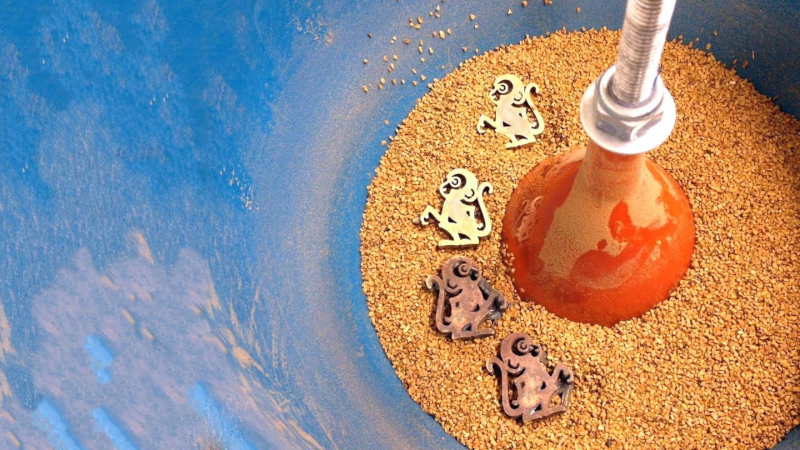There are few tasks quite as laborious as sanding and polishing. Any job that takes a lot of time and elbow grease is a prime candidate for mechanical help, and this one is no exception. At the suggestion of friends, [VegOilGuy] decided it was time to invest in a vibration tumbler. Naturally, building it rather than buying it was the order of the day.
If you’ve ever used an electric sander, you’ll know they’re an excellent source of vibration. Initially, the intention was to build a tumbler with the sander being removable and still usable for its original purpose. A clamping base was constructed with cable ties, wood, and Bondo, but sadly to no avail. The Velcro connection to the plastic tumbler bowl was simply not robust enough to hold up to repeated use.
Instead, the sander was permanently bolted to the tumbler bowl, yielding more positive results. A funnel was then also added to the bowl, to improve media circulation and reduce the amount required. Initial tests were positive, with the tumbler successfully polishing some cast brass parts using crushed walnut shells. [VegOilGuy] is still looking for a more abrasive media to use for initial patina removal, however.
Sometimes the best tools are the ones you build yourself. In this case, it’s a cheap and easy way to get a vibration tumbler and the results are great. If sanders aren’t your speed, why not check out this fan based build instead? Video after the break.
















I like stainless steel shot for tumbling, but I don’t know if it would work in this application due to leaking. In my rubber tumbler I add water and a squirt of dish soap.
The easiest way to add vibration to something is to do exactly what the $$$ bullet case tumblers use. A small induction fan motor with a 1″ long piece of steel rod, larger than the motor shaft. Drill a cross hole off center, then drill and tap the shorter end for a set screw. Then you just need some rigid spacers and four bolts to mount the motor. Make sure the oil felts for the bushings are well lubed and it’s good to go.
5″ to 8″ desk fans are cheap sources for the motors.
Funky Monkey :)
Would this work for polishing metalic pla parts?
I have tried walnuts, corn husk, and SSteel tumbling mix on PLA. None were effective. Also grinding compound for rock polishing. All in both a rock tumbler and a vibrating brass cleaner (great for brass metals with walnut and a little polish). The best I get is sanding with about #400 wet/dry.
Yeah, but cracking all those walnuts would take forever!
Simple barrel rollers are a quieter form of polisher – old printer carriages work lovely to roll a length of PVC pipe full of parts & media, or you can just bolt any container to a slowly rotating motor to tumble stuff.
Where are the other eight monkeys?